‘It was a whirlwind’: students, staff tackle unusual school year
Hills students, administrators, and teachers have had many different challenges with the “new norm” of school. It has consisted of many changes, but it is slowly becoming a routine.
Superintendent Erik Gundersen on Twitter
Ms. Katherine Donahue’s AP English Literature and Composition class on their first day of school in-person, Sept. 4.
Now that Pascack Hills has been in school –– whether it be hybrid or all-virtual –– for two weeks, students and staff have felt many ways about the adjustment.
Recently, Tim Wieland and Charleen Schwartzman moved into the positions of principal and assistant principal at Hills. The transition into new jobs isn’t always easy, let alone taking them on during a pandemic.
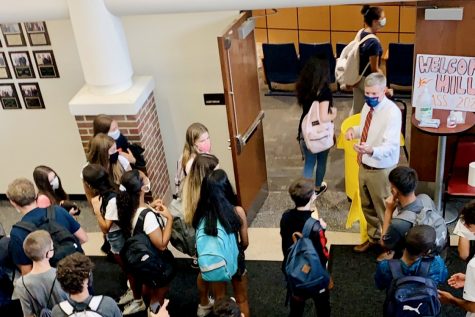
Principal Tim Wieland directs freshmen to their classes during orientation on Sept. 2.
“It was a whirlwind,” Schwartzman explained. “It’s a lot to learn being in this new position, but I rolled up my sleeves and I did it.”
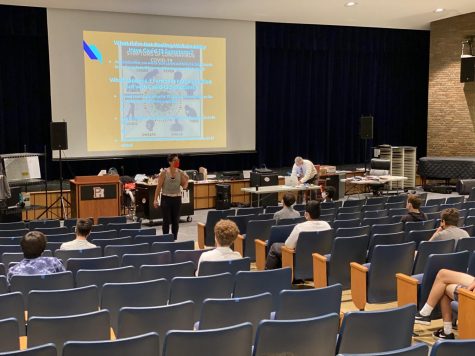
Assistant Principal Charleen Schwartzman, center, talks to freshmen during their orientation on Sept. 2.
Prior to school being in session again, the custodial staff moved a large amount of furniture into the main gym to comply with Centers for Disease Control (C.D.C.) social distancing guidelines.
“The transition has been a busy one,” Wieland said, “Throughout the summer, Mr. Paspalas, Mrs. Schwartzman, and I worked closely with our custodial and secretarial staff to make sure we were ready to open.”
“We had to move a lot. Mr. Wieland and I had tape measures, and we counted to see how many students could be in each classroom; 12 in this one, 13 in that one. We also had to move chemistry tables, and they’re heavier than they seem,” Schwartzman said.
aDVERTISE HERE
Wieland also stated that the custodial staff “has been instrumental in ensuring that the building was safe” by working on the ventilation, signage, and new cleaning protocols.
When school started on Sept. 3, Schwartzman described it as chaotic. However, she said that the mornings have been better since everyone has mostly settled into a consistent routine.
Mr. Wieland and I had tape measures, and we counted to see how many students could be in each classroom; 12 in this one, 13 in that one. We also had to move chemistry tables, and they’re heavier than they seem.
— Charleen Schwartzman, Hills Assistant Principal
“Now, I’m able to visit teachers and see them teach,” she said, “I can also help students more and give them the resources they need.”
As the principal of Hills, Wieland has a slightly different day-to-day routine –– one that feels like two separate days to him.
“Like I did as assistant principal, I enjoy being outside during drop off to greet students and teachers as they arrive at Hills. From 8:15 a.m. to 12:15 p.m., I try to be out and about within the building. Once the students leave, I get caught up on phone calls, emails, and meetings,” he explained.
Returning students and teachers of Hills have the advantage of being familiar with the layout of the school, but the schedule is brand new to all. Julianna Davino, a sophomore in Cohort A, expressed mixed feelings as to how she’s adjusting.
“I am happy and excited to be back at school after being quarantined and doing virtual school all these months. However, I also feel that the hybrid schedule is a little stressful and minimizes personal interactions with the teachers,” she explained.
Stuart Jeong, a Hills senior, shared his thoughts on the situation.
“I like the hybrid schedule because it allows us to go to school safely. I’m on the bowling team, but that’s cancelled due to the virus,” he explained. The exact status of bowling is unclear, but many fall sports are already in pre-season training.
Mr. Nicholas Scerbo, who is entering his fourth year teaching at Hills, also gave some insight as to how he’s adjusting to the hybrid schedule. He teaches U.S. History I & II, Art History, World History, and Economics.
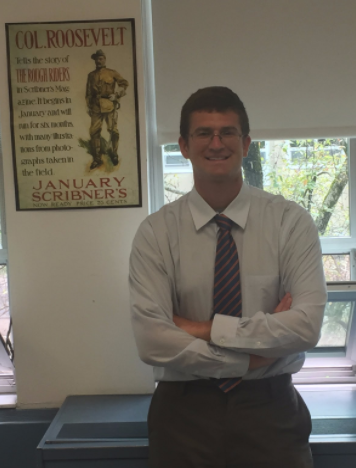
Nicholas Scerbo, a social studies teacher at Hills, in 2017.
“The biggest challenge is trying to keep contact with students who are in person and digitally at the same time. It makes things go more slowly than I usually like in the classroom,” he explained.
Scerbo also could not base lessons around certain activities due to Covid-19.
The biggest challenge is trying to keep contact with students who are in-person and digitally at the same time. It makes things go more slowly than I usually like in the classroom.
— Nicholas Scerbo, social studies teacher
“I usually like to have students move around and come up to the board in order to write things, or to break up into groups and discuss things as a small group first,” he commented, “we can’t do that right now, so that is difficult. However, I am learning some new ways to do things, which can be a nice challenge.”
His typical day includes getting to school early to set up for teaching in the morning, heading home to teach virtually in the afternoon, and returning to Hills for football practice.
On the other hand, teachers and students who are new to the school had another challenge of adjusting to not only the schedule, but the building layout, new environment, and working with people in only half the amount of time they usually would.
Mrs. Claire Mazan is the new teacher Fashion Design, Interior Design, and 21st Century Life Skills teacher. She was hired in June after she went through four interviews on Zoom: one with Hills students, one with Wieland, and two with Superintendent Erik Gundersen.
“Initially, the challenge with my classes is that they’re very hands-on,” Mazan said, “but my advisor just approved the purchase of 14 new sewing machines which my students can take home, use to work on projects, and bring them back in to be sanitized for others.”
Mazan only has three all-remote students, but she agreed that if there were more, it would be a greater challenge to tackle since her class is hands-on.
Schwartzman also commented on her concern for the all-remote students, and she wants to enforce the idea that “it’s all about connection.”
“We are still devising plans, such as clubs, to help the all-virtual kids feel more included. Peer leaders also delivered shirts to the freshmen students who are all virtual,” she said.
Gianna Devlin is a freshman at Hills this year who is all-remote; she feels that the adjustment has been easier as the school year progresses.
My family chose for me to do school fully online because they do not want to take any risks of getting the virus. Making this choice has come with some obstacles, but as the days pass, it has become much easier.
— Gianna Devlin, Hills freshman
“Virtual school has been a tremendous adjustment, especially as a freshman. My family chose for me to do school fully online because they do not want to take any risks of getting the virus. Making this choice has come with some obstacles, but as the days pass, it has become much easier,” she said.
The students at Hills appear to be following the C.D.C. guidelines well, and there has been little report of people disobeying them while in school.
“They have been really respectful,” Schwartzman stated, “I think the approach of doing it to keep us all safe really reached the students.”
Occasionally, she had to tell a few students to pull their masks above their noses, but she said that it is a quick fix once she says “over the nose!”
Another small challenge that Schwartzman had to fix was the imbalance of students in Cohort A. Mr. Paspalas reached out to some students, such as those in Scerbo’s eighth-period Honors U.S. History I, and explained that some would have to volunteer to move to Cohort B since there were too many students.
[The students] have been really respectful. I think the approach of doing it to keep us all safe really reached the students.
— Charleen Schwartzman, Hills Assistant Principal
This announcement was about a week ago, and Schwartzman explained that the number of students in each cohort “seems to be pretty settled.”
Overall, Hills students, administrators, and teachers have had many different challenges with the “new norm” of school. It has consisted of many changes, but it is slowly becoming a routine for all.
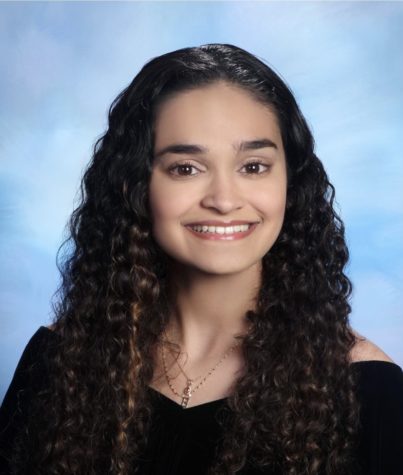
Briana Keenan is a senior at Hills. She joined the Trailblazer her freshman year as a staff writer and edited for the In-Depth and School News sections her sophomore and junior years, respectively. This year, Keenan is looking forward to being the publication's Editor-in-Chief and continuing to write, edit, and manage stories for the Hills community.
Fun fact: Over the summer, Keenan went to the School of the New York Times for two weeks.


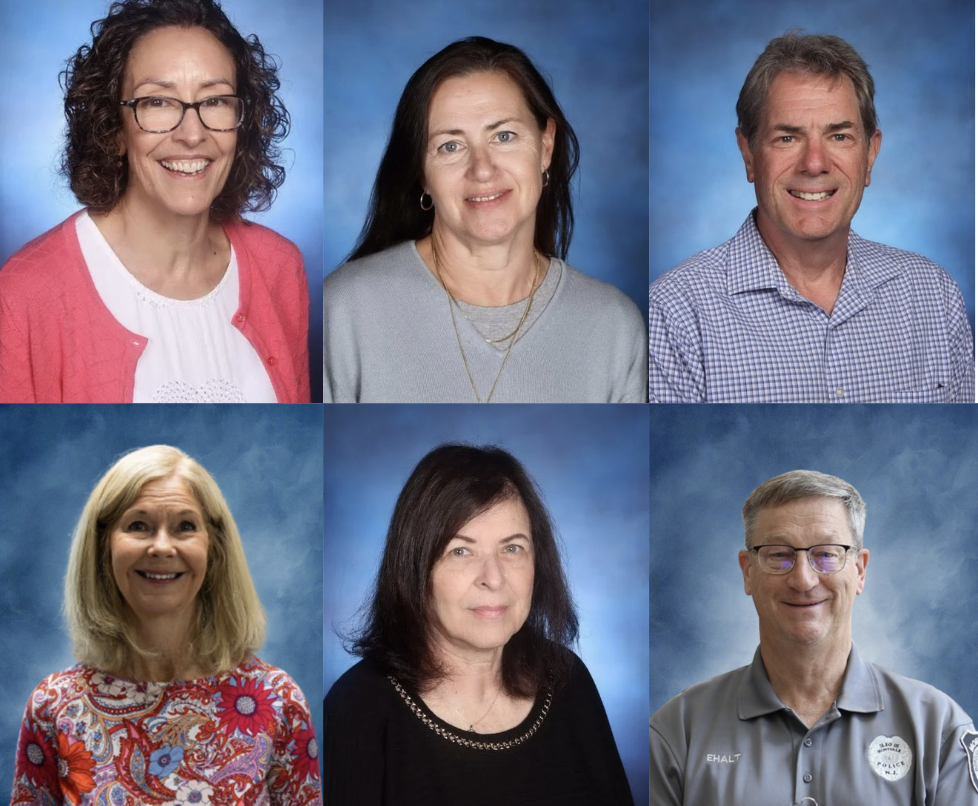
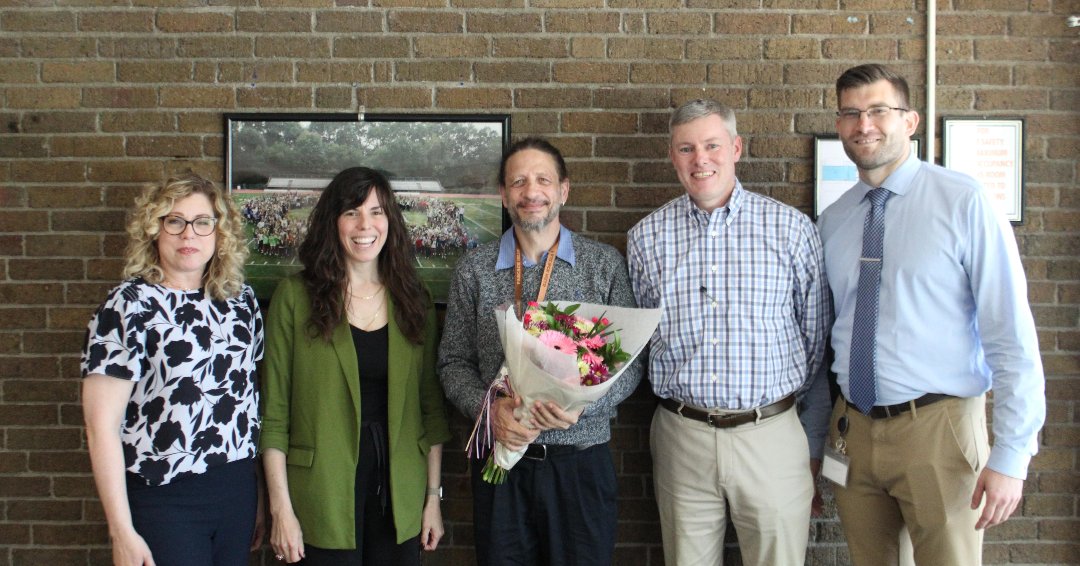
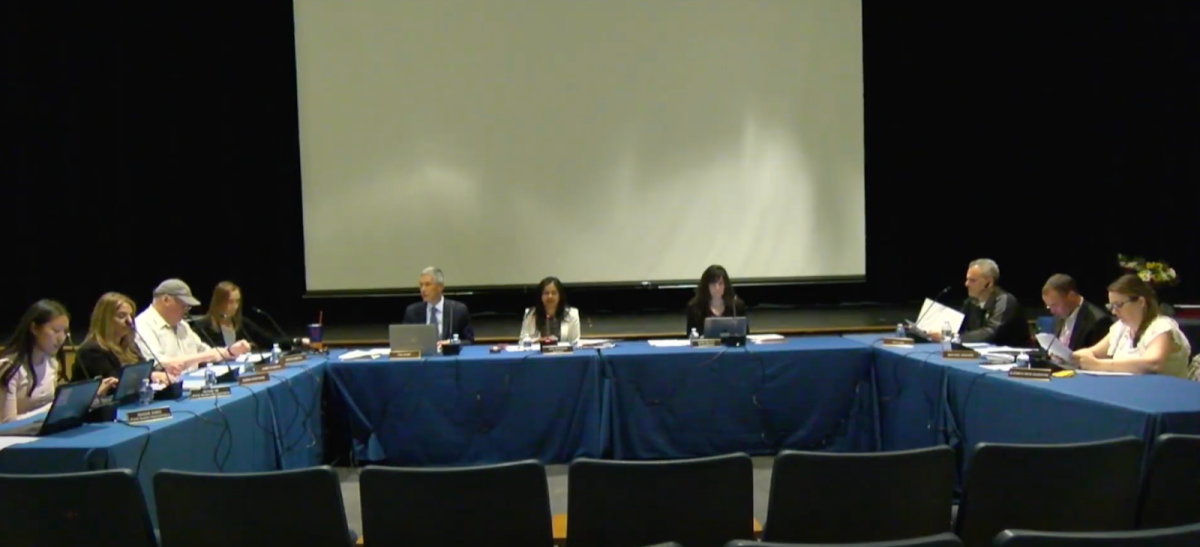
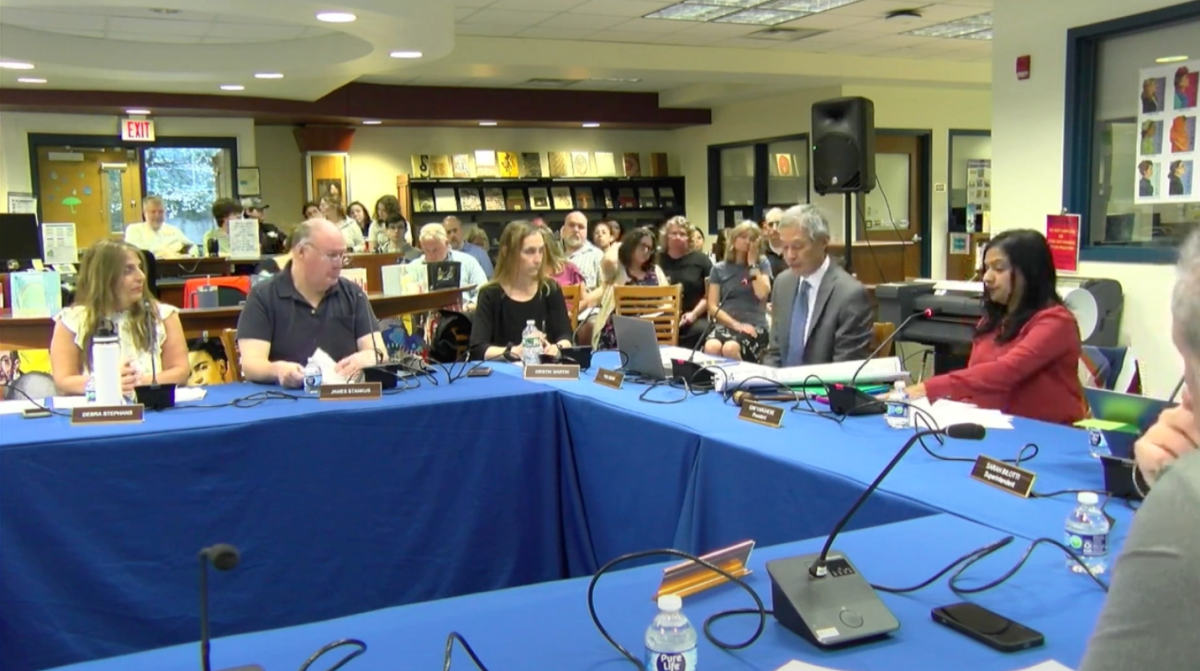
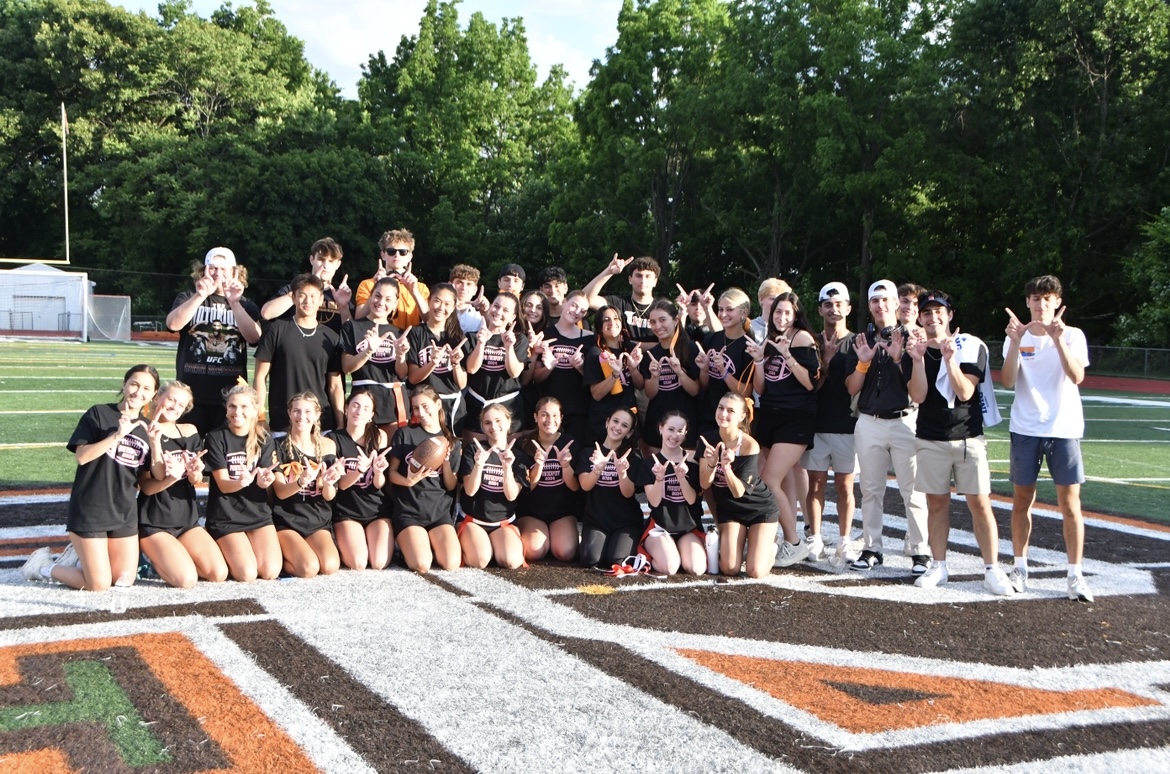
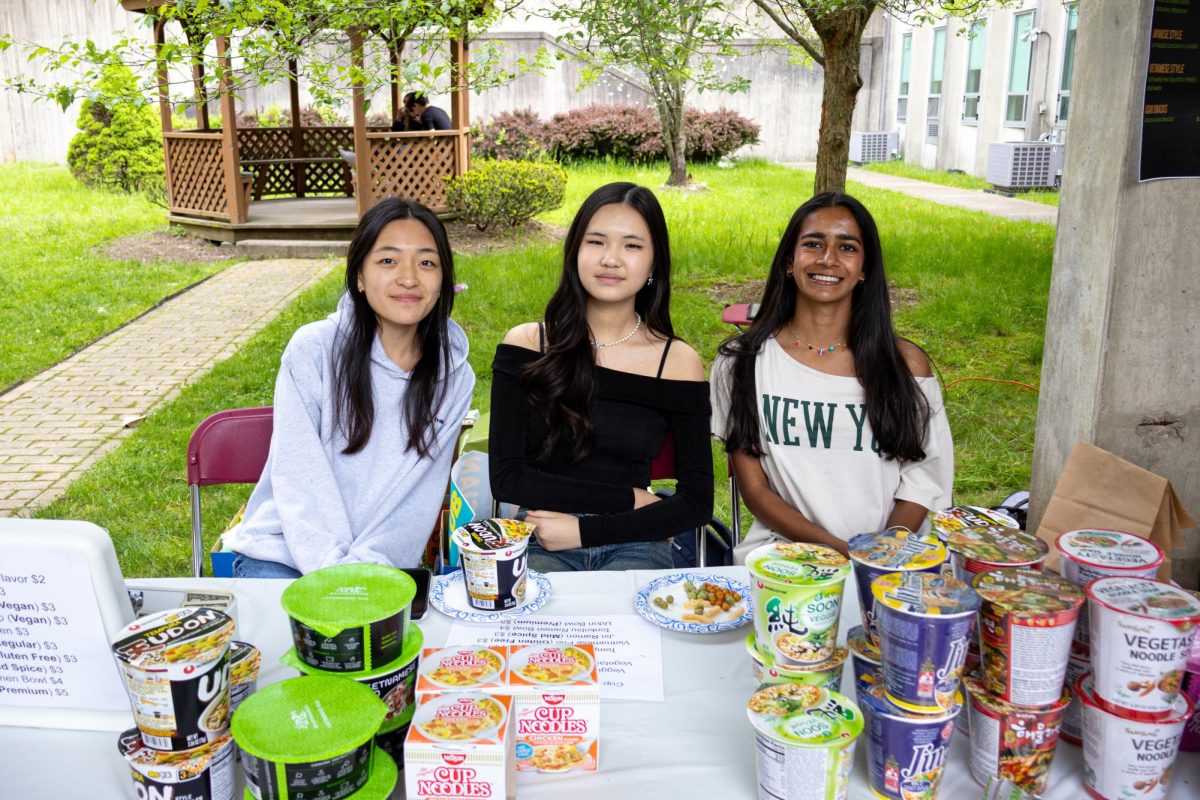
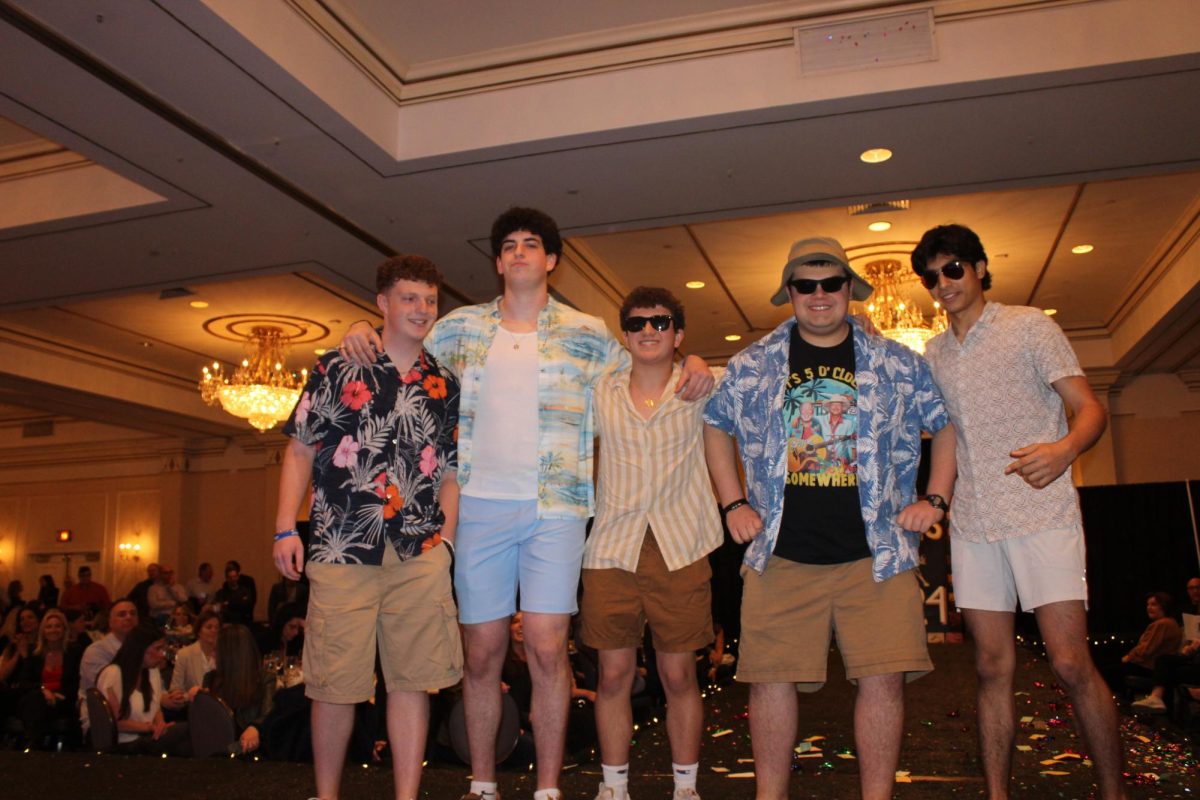
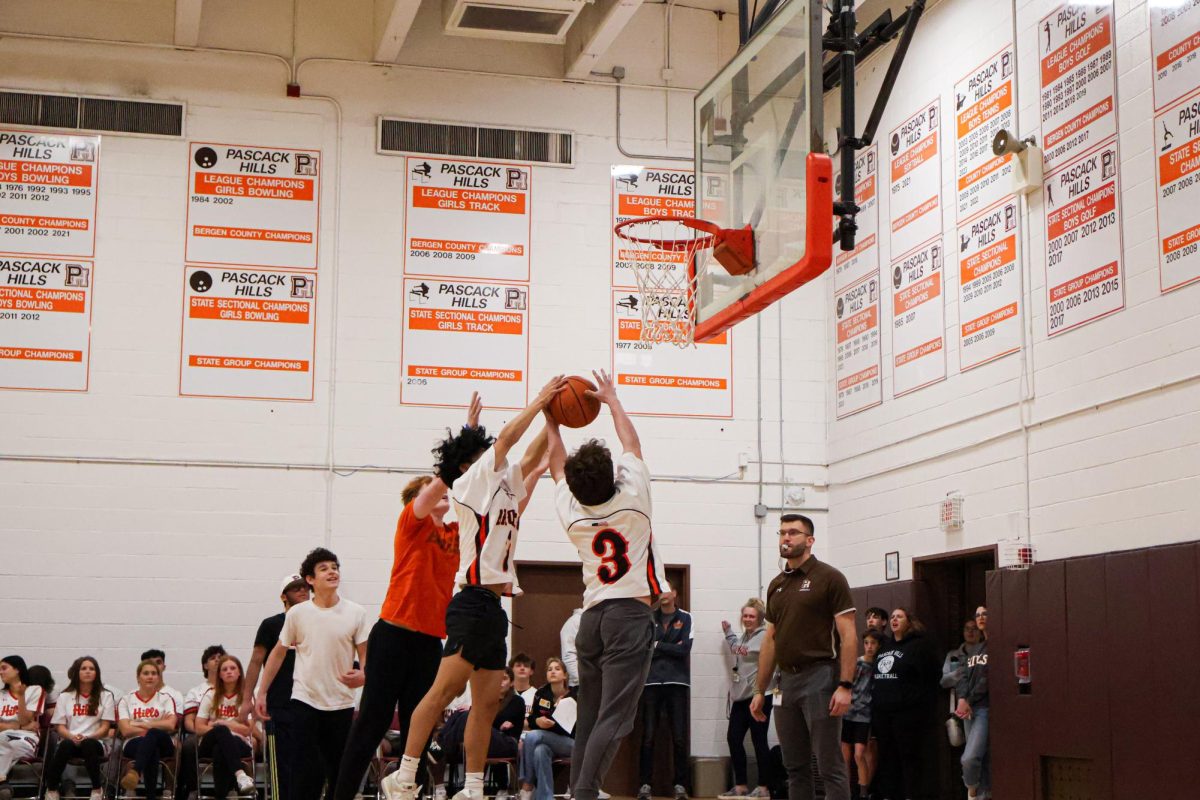
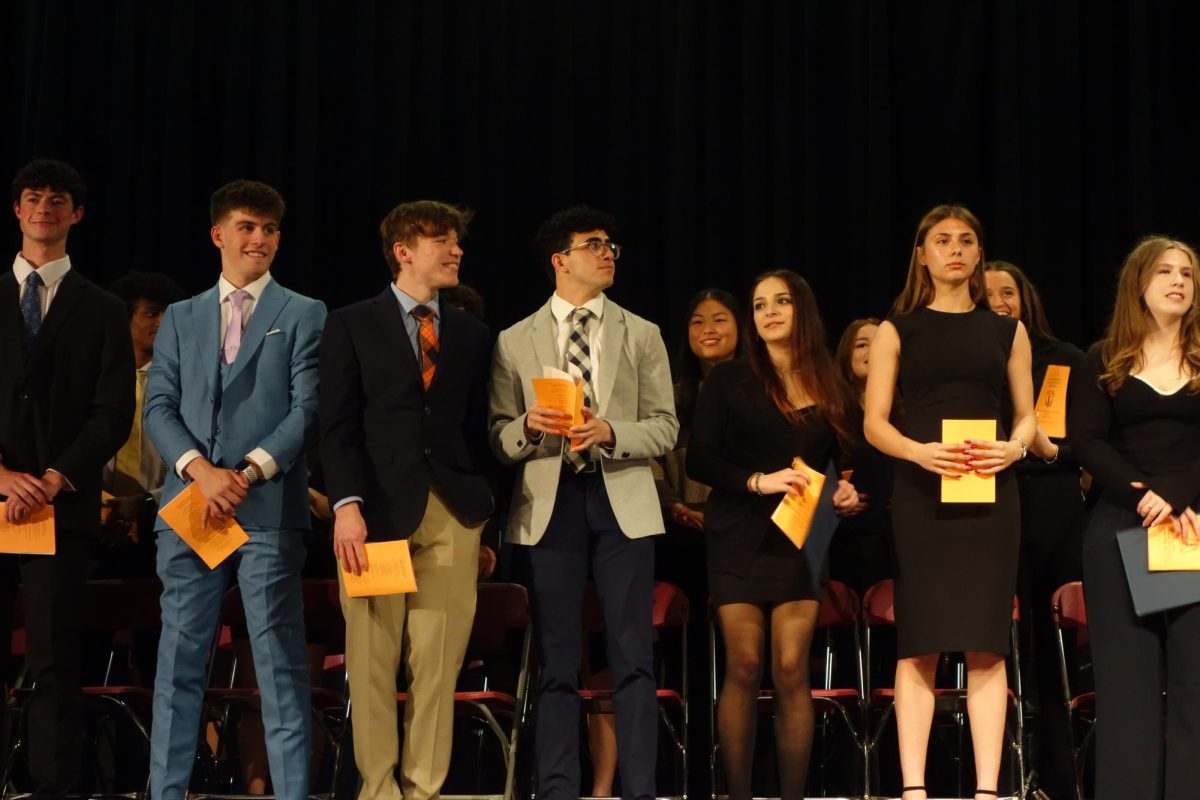
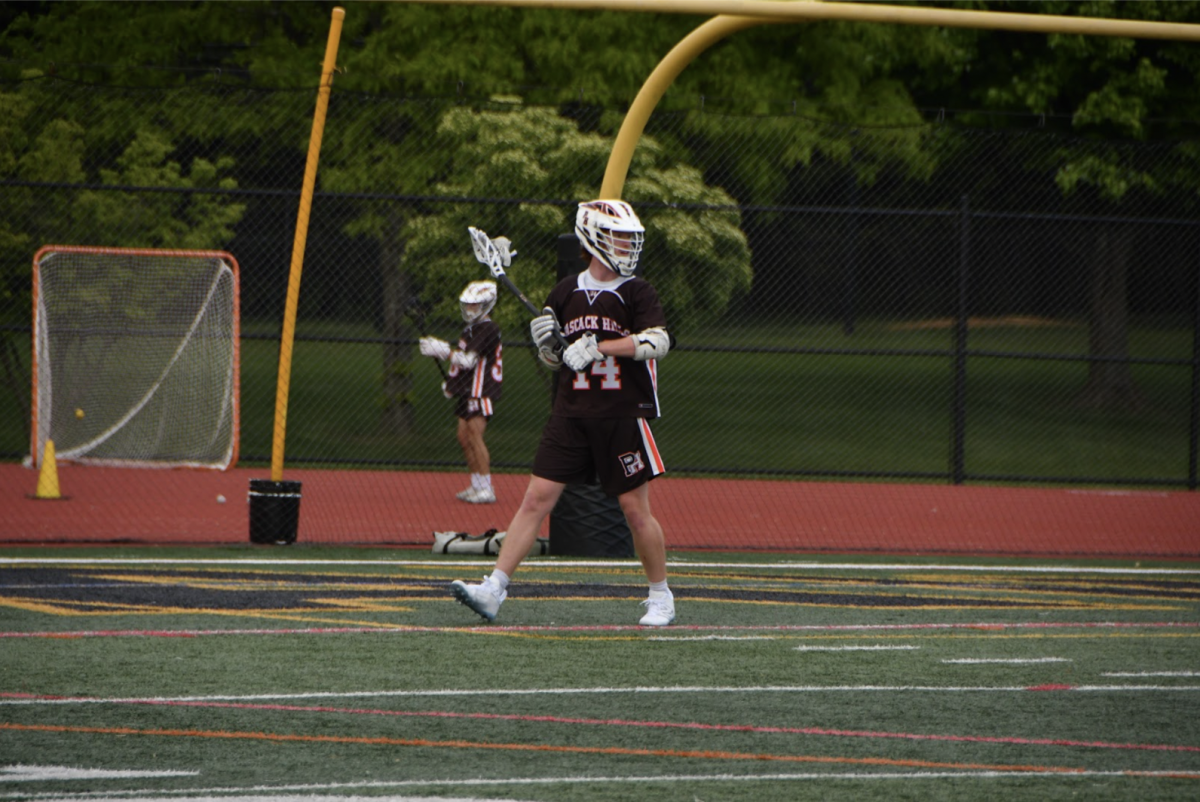

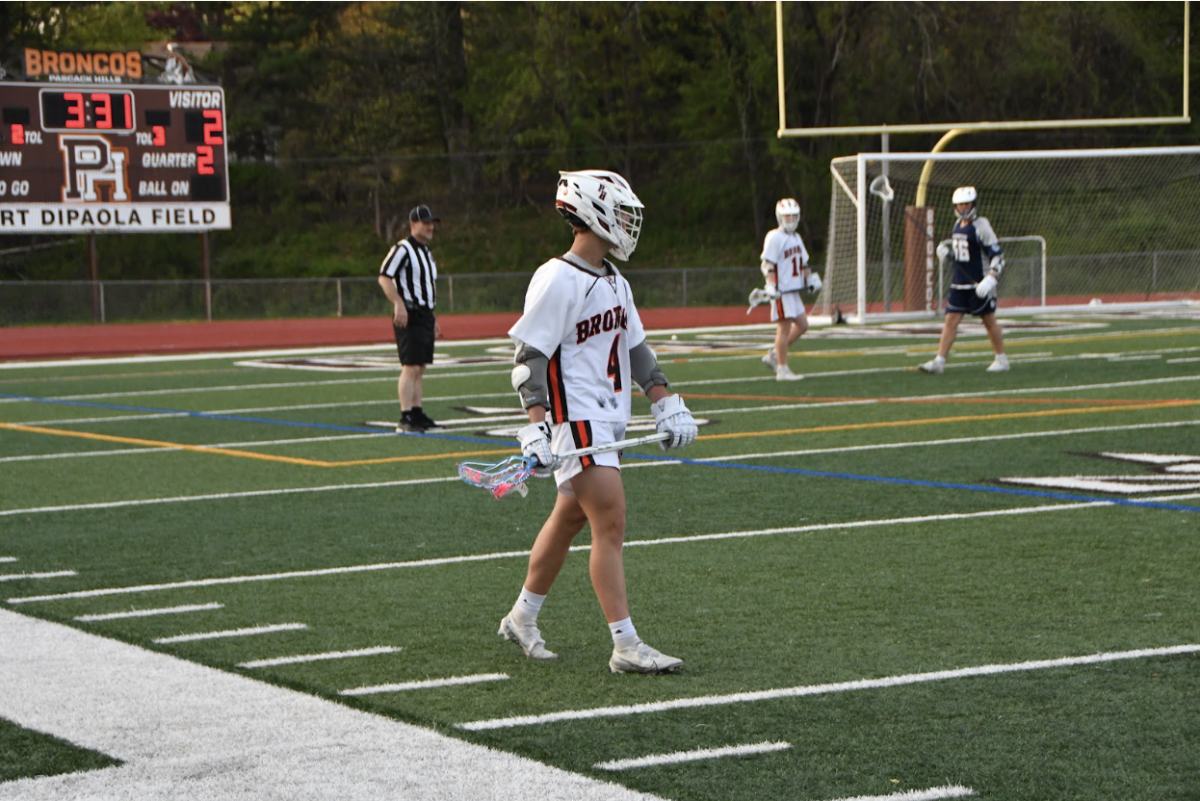



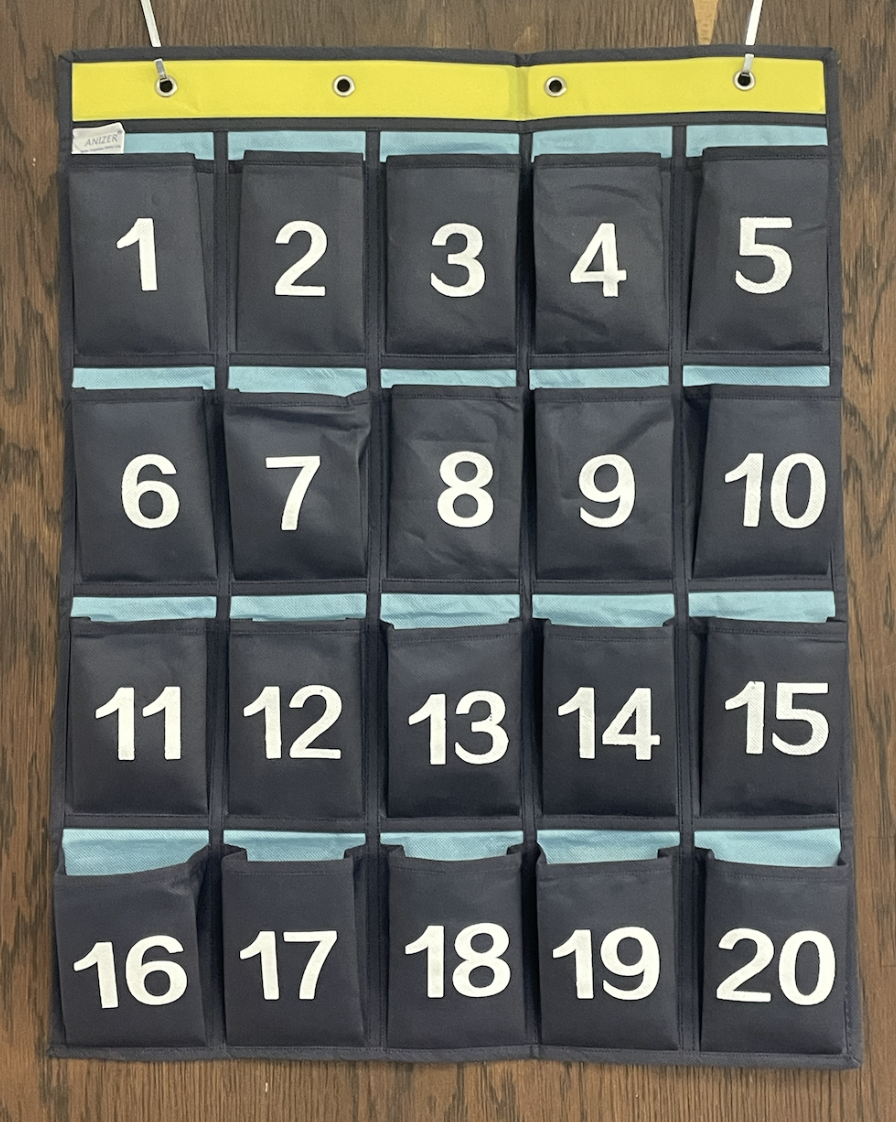
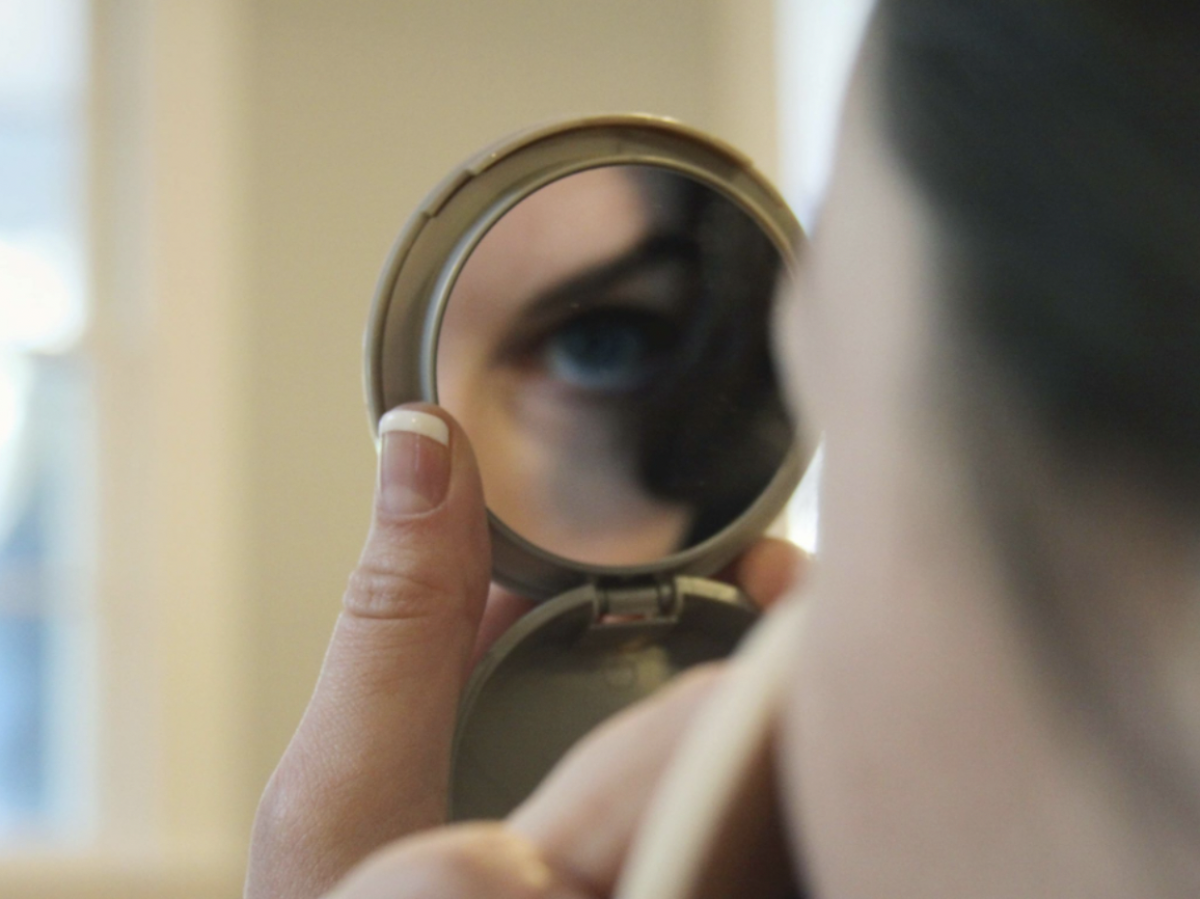


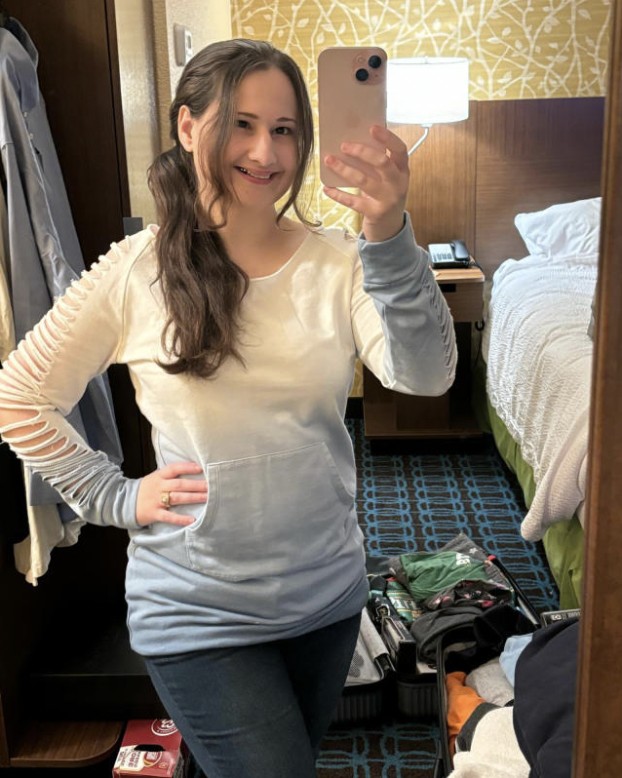





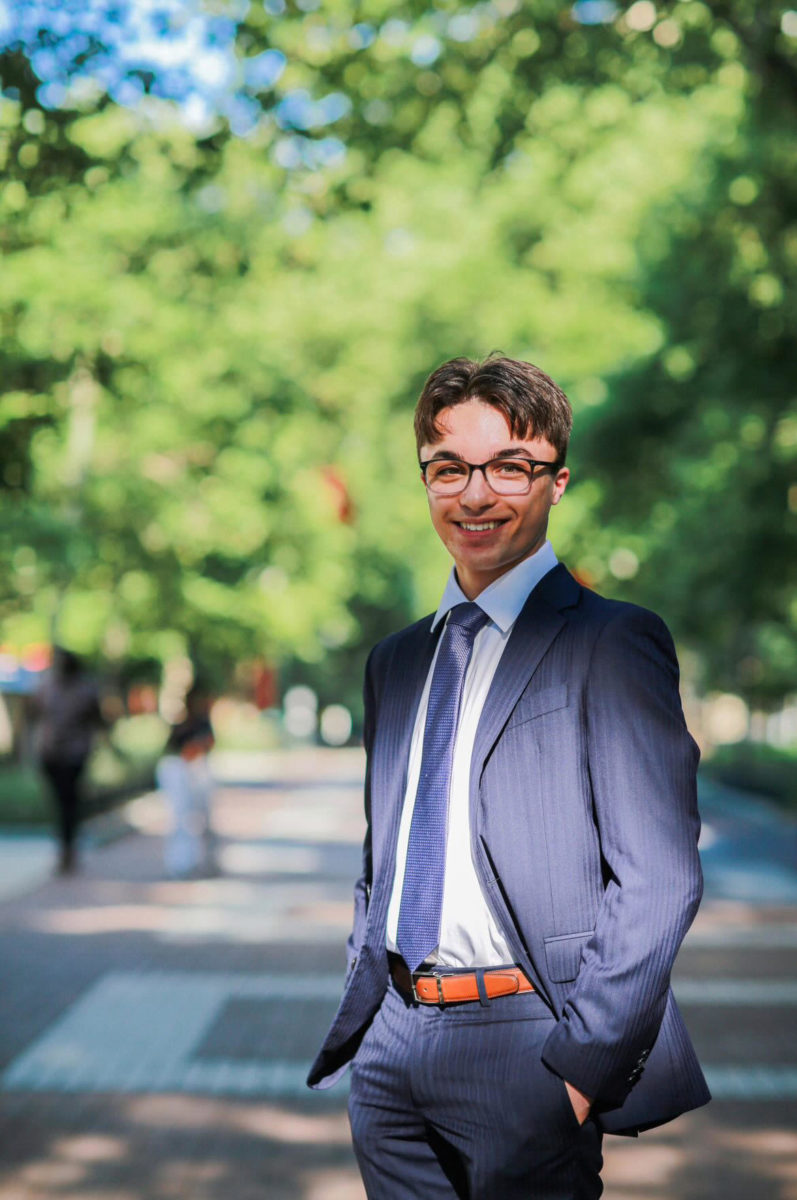

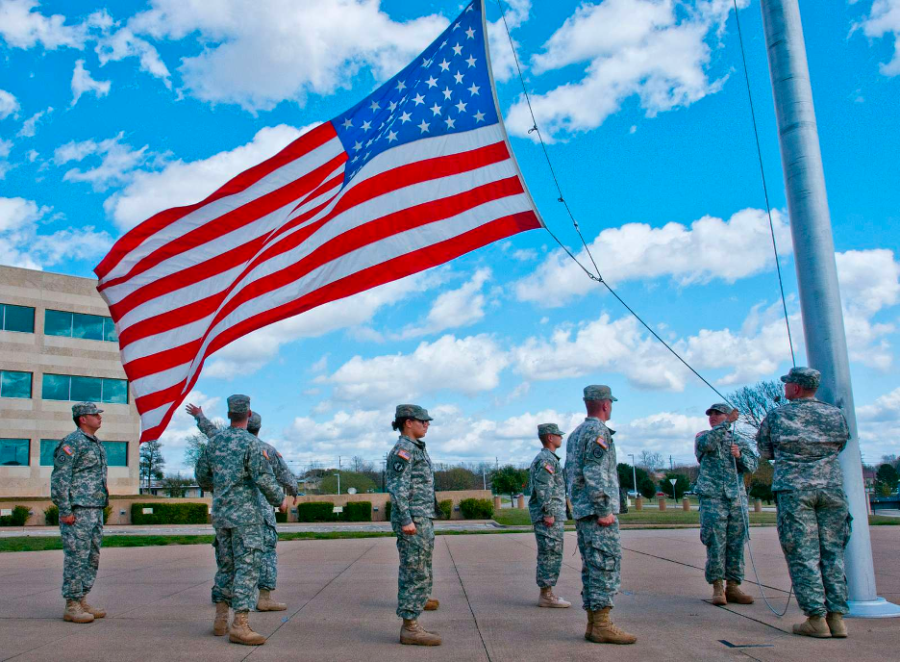

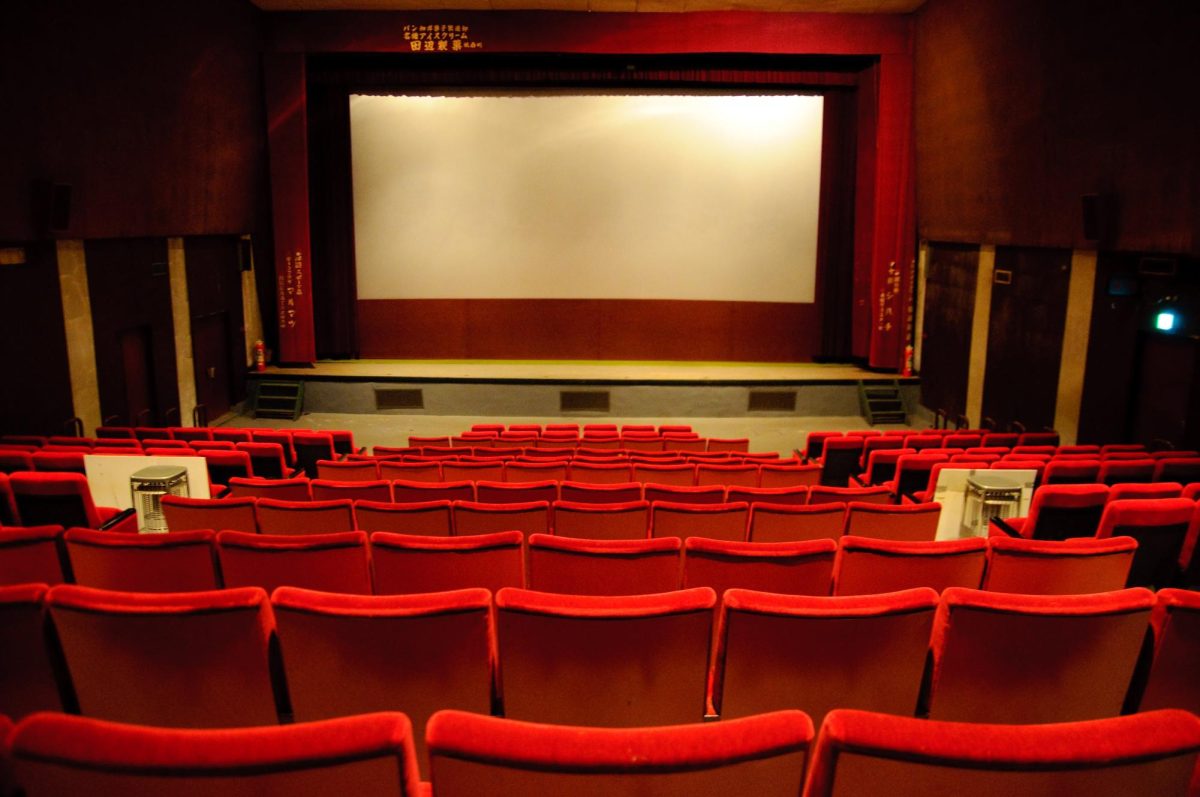


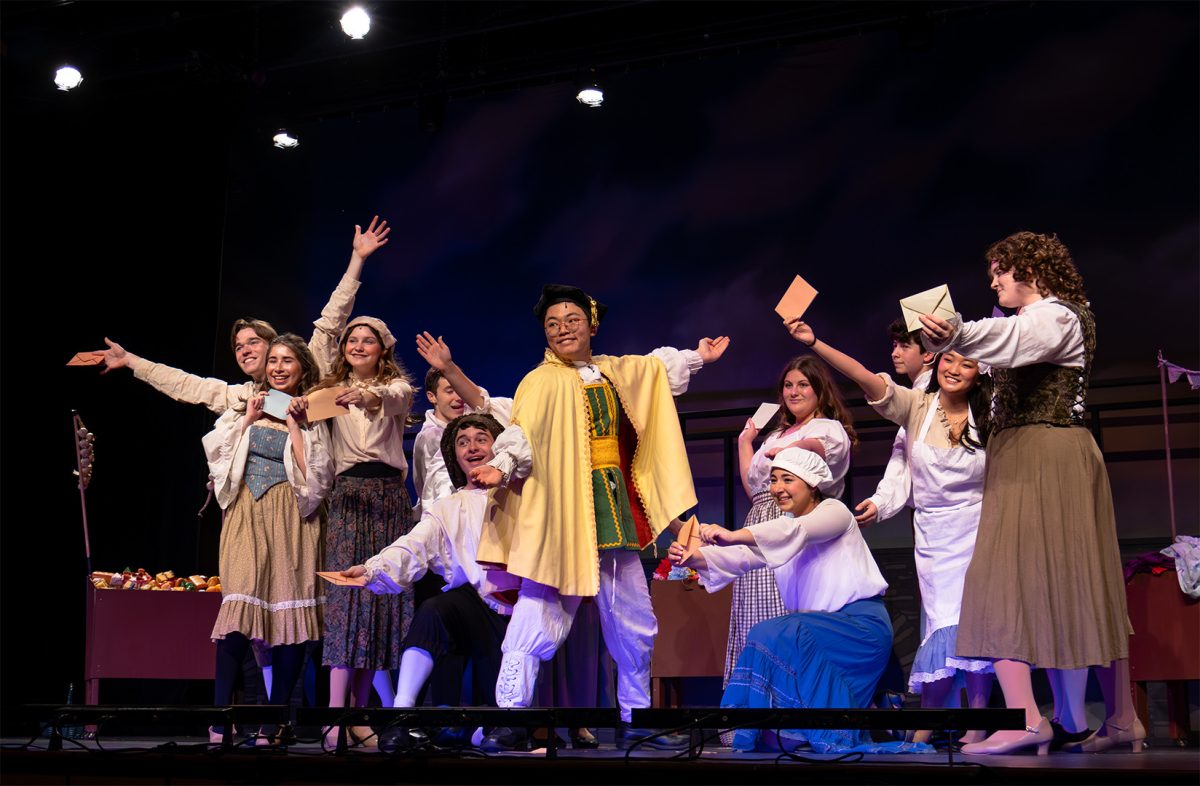





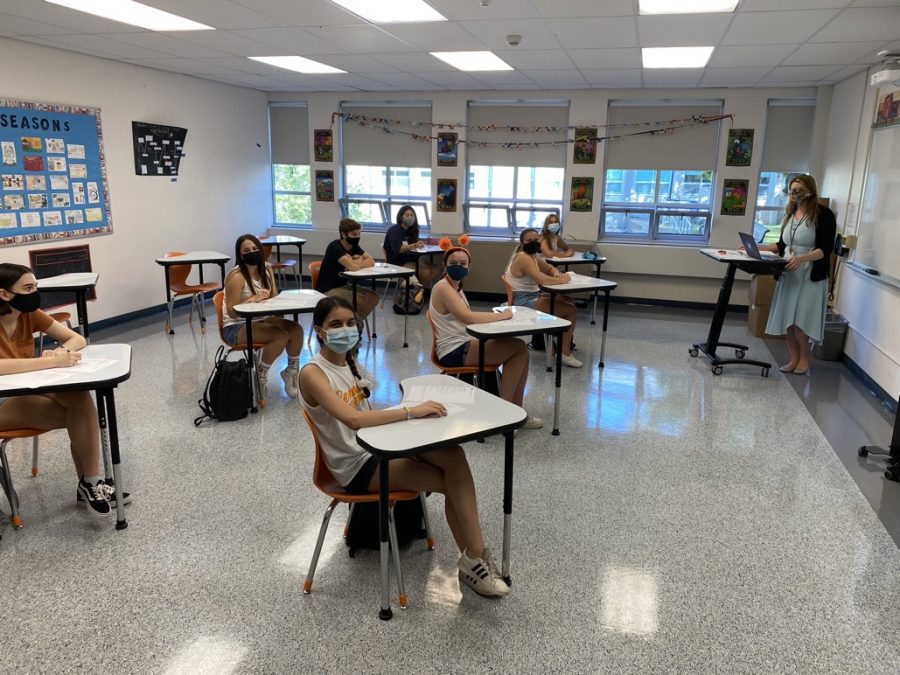


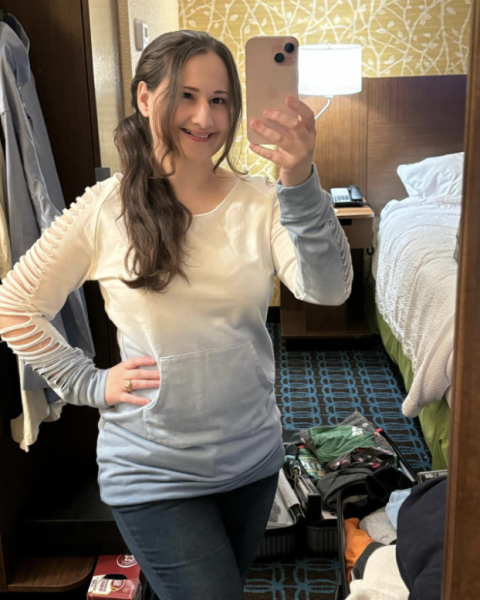


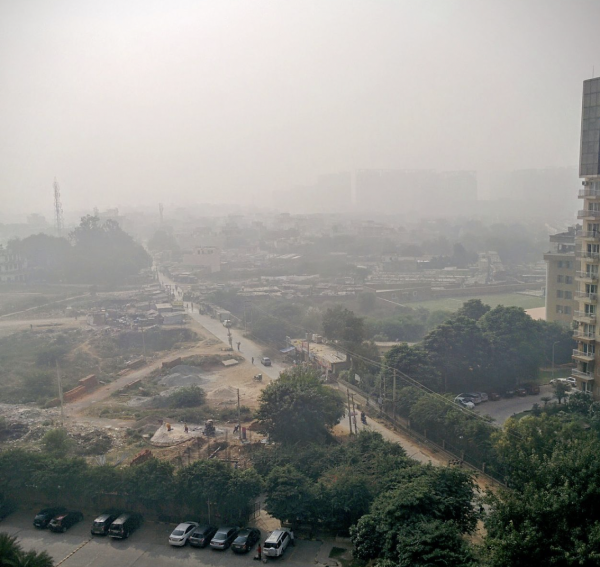
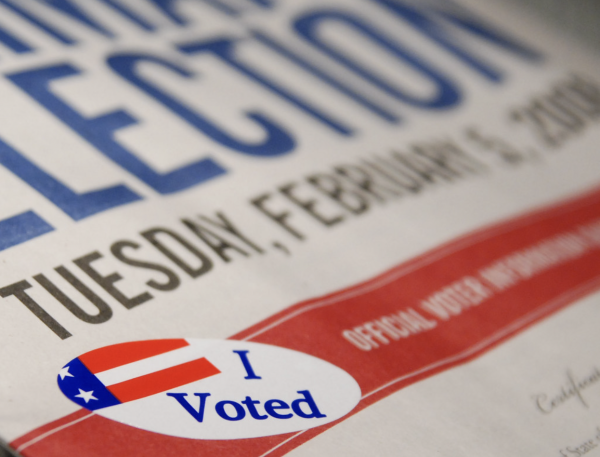
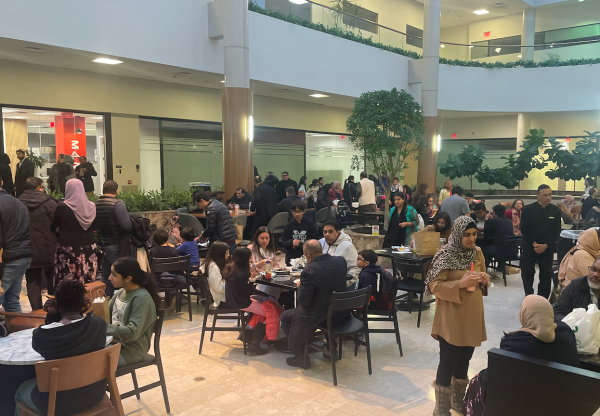

Catie • Sep 23, 2020 at 12:18 PM
Great article!!